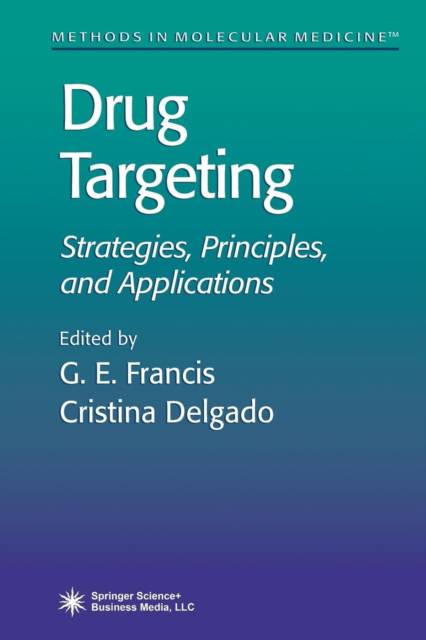
- Retrait gratuit dans votre magasin Club
- 7.000.000 titres dans notre catalogue
- Payer en toute sécurité
- Toujours un magasin près de chez vous
- Retrait gratuit dans votre magasin Club
- 7.000.000 titres dans notre catalogue
- Payer en toute sécurité
- Toujours un magasin près de chez vous
Drug Targeting
Strategies, Principles, and Applications
167,95 €
+ 335 points
Description
Advances in understanding the molecular mechanisms of disease together with the advent of recombinant DNA and other technologies have opened opportunities for a vast array of novel therapeutic biopharmaceuticals and diagnostic agents. However, even natural biomolecules present a myriad of problems that limit their potential as pharmaceutical agents. Rapid degra- tion and elimination, immunological reactions, and toxicity are often asso- ated with new biopharmaceuticals, much as with conventional agents. Targeted delivery systems have the potential to increase the efficacy of existing diagnostic and therapeutic agents and also create an opportunity for the use of new pharmaceuticals, substances that themselves can be harmful to normal tissues. Both passive and active targeting have been exploited. Most active targ- ing strategies have focused on antibody conjugates since preparation of highly specific monoclonal antibodies is well established. However, a new wave of c- jugates exploiting other ligands is underway. Access to the target tissue remains an obstacle and is an area where passive targeting can be useful. In Drug Targeting: Strategies, Principles, and Applications we have tried to compile a state-of-the-art volume on current targeting approaches. The first section focuses on certain key strategies applied to date, and how to build the antibody- ligand constructs. This is followed by a section on theoretical considerations for t- geting, focusing on approaches relevant to solid tumors. The last section deals with some experimental and clinical applications of targeted drug delivery systems.
Spécifications
Parties prenantes
- Editeur:
Contenu
- Nombre de pages :
- 318
- Langue:
- Anglais
- Collection :
- Tome:
- n° 25
Caractéristiques
- EAN:
- 9781489941718
- Date de parution :
- 11-08-13
- Format:
- Livre broché
- Format numérique:
- Trade paperback (VS)
- Dimensions :
- 152 mm x 229 mm
- Poids :
- 444 g






